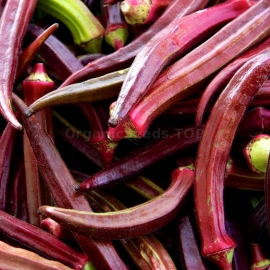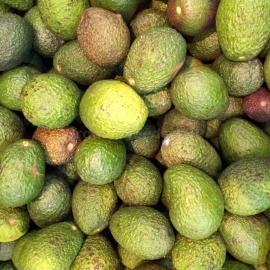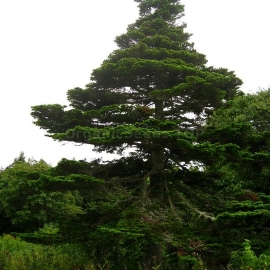 EXCLUSIVE
EXCLUSIVE


«Alabama Red» - Organic Okra Seeds
1.14 €
This is a great rare heirloom variety producing fat pods greenish red in colour. The fruits are produced on tall plants and they give extra flavor to soups, stews and sauces as well as being a classic ingredient for curries.
-
Heirloom Okra «Alabama Red»
This is a great rare heirloom variety producing fat pods greenish red in colour. The fruits are produced on tall plants and they give extra flavor to soups, stews and sauces as well as being a classic ingredient for curries.
Sow 5 mm, seedlings emerge 10-14 days, space 50 cm apart.
Harvest when pods are young, approx 5 days after flowers have opened.
How to grow
Choose your sunniest spot for growing okra, and wait until the weather is warm to set out your plants. Plants like it when nights are at least in the 60s and days 85 or warmer. In the North, gardeners might wait until late June to plant, since pods appear within 2 months.
Okra grows best in soil with a near-neutral pH between 6.5 and 7.0, although it will do fine in a pH as high as 7.6. Plants benefit from a generous amount of compost or other rich organic matter, which should be thoroughly mixed into the soil before planting. If your soil is not rich, you can work bagged organic fertilizer or slow-release conventional fertilizer such as 4-6-6 or 19-19-19 into the soil at the rate recommended on the package, then feed the plants with Bonnie Herb & Vegetable Plant Food at planting and every couple of weeks thereafter.
Okra seedlings have fragile taproots that cannot be broken. Thoroughly water your seedlings an hour before you plant them. Gently break open the sides and bottoms of their biodegradable containers, separate the seedlings, and set them about 10 inches apart. Plant slightly deeper (about ½ inch) than they grew in their pots. Water the little plants if rain is not expected, but wait a few days before mulching to give the soil a chance to absorb the sun’s warmth.
Okra is appreciated for its ability to withstand drought compared to other vegetables, but for good growth and production, you’ll need to water at least an inch a week, just as with other vegetables. Just know that if you run into an extended dry period and can’t seem to water enough, okra will be the last to suffer.
The early growth of okra is often slow, but the plants grow much faster once summer starts sizzling. In addition to gaining height, okra’s leaves get bigger as the plants grow and begin producing yellow blossoms followed by tender pods. Plants are erect with a main trunk, making them look a little tree-like in the garden.
Products Viewed Before
Product code: 12399
4.97 €
The Feijoa or Pineapple Guava is a container plant with green, egg-shaped fruits that taste sweet-sour and smell like pineapples. They can be eaten fresh or, for example, be mixed in salads or pies.
Product code: 12426
1.14 €
Noble fir is native to a limited area on the Pacific Coast region of North America, growing in the Cascades from the northern border of the state of Washington south to the border between Oregon and California.


